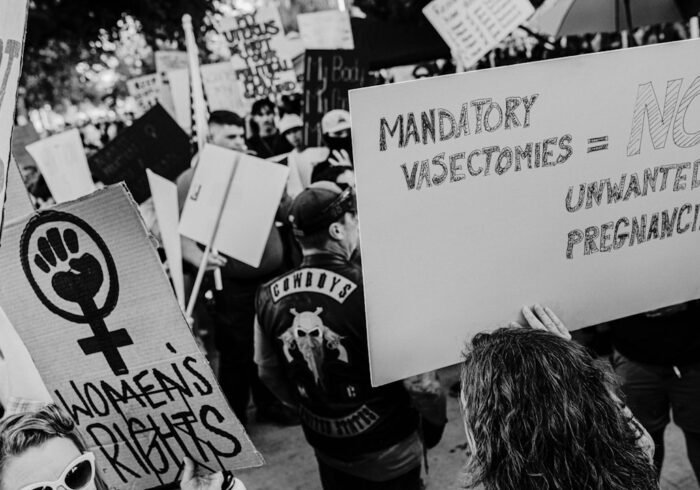Deforestation’s effects on the Amazon rainforest are extensive and go beyond the immediate loss of trees and biodiversity. Because it absorbs so much carbon dioxide, the Amazon, sometimes known as the “lungs of the Earth,” is essential in controlling the global climate. In addition to reducing this capacity to store carbon, the removal of trees also releases the carbon they have stored back into the atmosphere, accelerating climate change. According to estimates, deforestation in the Amazon contributes roughly 10% of global greenhouse gas emissions, which is a significant contribution to global emissions per studies.
Key Takeaways
- Deforestation in the Amazon has a significant impact on global climate change and biodiversity loss.
- Causes of deforestation in Brazil include logging, mining, and agricultural expansion.
- Agriculture and ranching are major contributors to the destruction of the Amazon, leading to widespread deforestation.
- Indigenous communities in the Amazon are disproportionately affected by deforestation and land exploitation.
- Government policies in Brazil play a crucial role in either promoting or preventing deforestation in the Amazon.
The urgency of tackling deforestation as a crucial part of global climate action is highlighted by this concerning statistic. Also, deforestation has serious ecological repercussions. There are over 16,000 species and an estimated 390 billion individual trees in the Amazon rainforest, many of which are endemic and unique to this planet. In addition to posing an extinction threat to innumerable species, the loss of these trees also upsets entire ecosystems.
The interdependence of flora and fauna is essential to the Amazon’s complex web of life; the extinction of one species can have a domino effect on others. For example, the loss of some tree species may result in less fruit being available to animals, which may have an impact on the number of predators. This delicate balance is essential to preserving biodiversity, and if it is upset, the ecosystem may undergo permanent changes.
Addressing deforestation in Brazil is a complex issue because its causes are numerous & frequently connected. Economic development is one of the main reasons, especially in industries like mining and agriculture. Utilizing its natural resources has always been the backbone of Brazil’s economy, and as the demand for goods like beef & soybeans rises globally, so does the need to clear land for farming and grazing. The Amazon basin has seen substantial land conversion as a result of Brazil’s rise to prominence as one of the world’s top exporters of soy in recent years.
| Year | Deforestation Area (sq km) | Percentage Change |
|---|---|---|
| 2015 | 6,207 | -24% |
| 2016 | 7,893 | +27% |
| 2017 | 6,947 | -12% |
| 2018 | 7,536 | +8% |
| 2019 | 9,762 | +30% |
Government policies that put economic growth ahead of environmental protection frequently enable this agricultural expansion. Illegal logging is a major contributor to deforestation. Because of lax enforcement and corruption in regulatory agencies, illegal logging operations persist despite laws intended to protect the rainforest. These operations not only cause the loss of valuable timber, but they also build access roads that allow for additional encroachment into areas that were previously uninhabited. Also, by allowing people to settle and exploit remote areas, infrastructure development projects like dams and highways worsen deforestation.
Road construction through the Amazon has been associated with higher rates of deforestation because it makes it easier for miners, loggers, & farmers to access the area. The main industries causing deforestation in the Amazon rainforest are agriculture and ranching. With large areas of forest being cut down to create room for monoculture crops like soybeans, the growth of agricultural land has been especially noticeable in recent decades. Along with the substantial loss of habitat, this move to large-scale agriculture has also resulted in soil erosion and a rise in the use of chemical pesticides and fertilizers, both of which can negatively impact regional ecosystems.
In order to increase economic growth, the Brazilian government has aggressively supported agricultural development, frequently at the expense of environmental sustainability. Another significant factor in Brazil’s deforestation is cattle ranching. Millions of cattle live in the Amazon, where ranching operations are frequently built on formerly forested land. Actually, it’s estimated that cattle grazing now occupies about 80% of the deforested areas in the Brazilian Amazon. Methane released by cattle is one way that this practice contributes to greenhouse gas emissions in addition to destroying habitat.
Also, ranching activities can worsen water pollution & soil erosion, further harming the ecosystem. A vicious cycle is created when cattle ranching and agricultural growth go hand in hand. Deforestation causes environmental degradation, which then calls for more land to be cleared for agriculture. Indigenous communities are often disproportionately impacted by deforestation, despite their crucial role in maintaining the Amazon rainforest.
For many generations, numerous indigenous groups have maintained a strong cultural bond with the land while living sustainably within the forest, depending on its resources for their livelihoods. But these communities are facing more & more threats to their way of life as deforestation speeds up as a result of outside forces like mining, logging, and agriculture. Along with upsetting their customs, land encroachment causes disputes over access to resources and land rights. For many Brazilian indigenous groups, the fight for land rights has become crucial. Brazil’s constitution contains legal protections, but enforcement is lax, making indigenous territories open to invasion by land grabpers & illegal loggers.
Indigenous leaders have occasionally been subjected to intimidation and violence while protecting their territories from encroachment. Their ability to successfully manage & safeguard the forest is also threatened by the loss of territory, which also jeopardizes their cultural identity. Their marginalization endangers not only their communities but also international efforts to preserve the Amazon because it has been demonstrated that indigenous knowledge systems play a major role in biodiversity conservation. Brazil’s deforestation trajectory has been significantly shaped by government policies.
Policies that support or impede environmental protection initiatives have been put in place by different administrations over the years. In the case of President Luiz Inácio Lula da Silva’s administration from 2003 to 2010, for example, deforestation rates significantly decreased during times when environmental regulations were strengthened. This was accomplished by combining enforcement actions against illicit logging, more satellite-based monitoring, & encouragement of sustainable land-use practices.
However, recent changes in the direction of policy have alarmed both scientists and environmentalists. During the 2019–2022 administration of President Jair Bolsonaro, policies that prioritized resource extraction and agricultural growth over conservation initiatives significantly reduced environmental protections. This included lowering fines for unlawful deforestation activities and reducing funding for environmental organizations. Since deforestation rates have increased as a result of these policy changes, there has been intense domestic and international criticism.
The future of the Amazon rainforest continues to be significantly influenced by the interaction between political will & environmental stewardship. As the world has become more aware of the Amazon’s importance, international efforts to stop its deforestation have accelerated in recent years. To protect this important ecosystem and encourage sustainable practices, a number of coalitions and organizations have formed. The Amazon Fund, which was started in 2008 with assistance from foreign donors like Norway and Germany, is one noteworthy project.
The fund’s objective is to provide funding for initiatives that stop deforestation and encourage sustainable growth in the Amazon basin. It aims to empower local communities and address the underlying causes of deforestation by funding conservation initiatives. International accords like the Paris Agreement have also emphasized how crucial forest preservation is to global climate action plans. More & more nations are realizing that protecting forests is crucial to reaching their climate goals. Effective strategies that address environmental protection and socioeconomic development require cooperation between governments, non-governmental organizations, and indigenous groups.
Nevertheless, these programs frequently encounter difficulties with funding distribution, governance, and guaranteeing that local communities participate fully in decision-making procedures. With conflicting interests vying for control of its resources, the Amazon rainforest’s future is in jeopardy. Forecasts suggest that, as a result of climate change and continuous deforestation, significant areas of the Amazon may change from rainforest to savanna-like ecosystems by 2050 if current trends are allowed to continue unchecked. Not only would this change cause a major decline in biodiversity, but it would also change local weather patterns and interfere with water cycles that are essential to human settlements & agriculture in Brazil and elsewhere.
However, there is also hope for conservation and restoration initiatives that could contribute to securing the Amazon’s future sustainability. Reforestation, sustainable agriculture, and community-based conservation initiatives have shown promise in reducing some of the negative effects of deforestation. Also, there is now more support for preserving forests as vital carbon sinks as a result of growing global awareness of climate change. There is a chance for more comprehensive approaches that honor both ecological integrity and cultural heritage when indigenous knowledge is incorporated into conservation plans.
By taking different steps that encourage sustainability and increase awareness of deforestation issues, individuals can significantly contribute to the protection of the Amazon rainforest. Making thoughtful purchasing decisions that give priority to goods sourced from sustainable practices is one efficient method. One way to lessen demand for goods associated with deforestation is to choose certified sustainable palm oil or beef from ethical ranchers. Also, efforts to save this important ecosystem can be strengthened by volunteering or making donations to organizations that support rainforest conservation.
Also effective strategies for people who want to have an impact are advocacy and education. People can promote greater understanding of the effects of deforestation and collective action toward sustainability by educating their communities or social networks about the value of the Amazon rainforest. Decision-makers at different levels can be further influenced by interacting with local representatives or taking part in campaigns that support stricter environmental regulations. In the end, every action matters; whether through advocacy work or lifestyle decisions, people can make a significant difference in protecting the Amazon rainforest, one of the planet’s most valuable natural resources.



